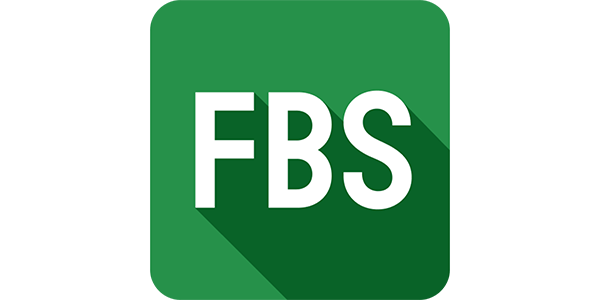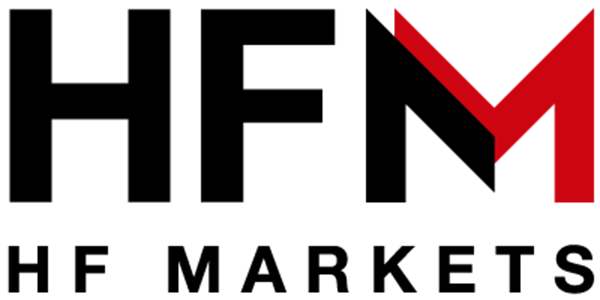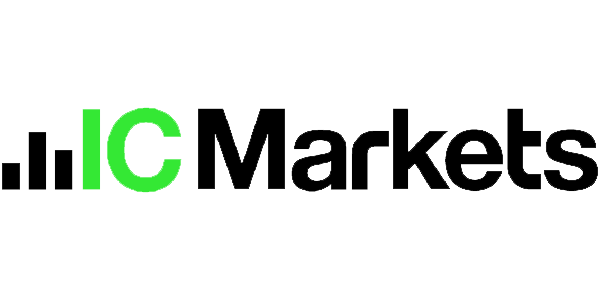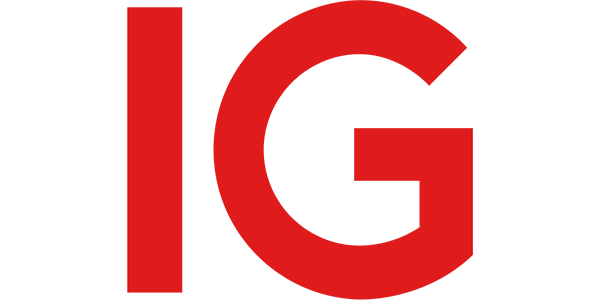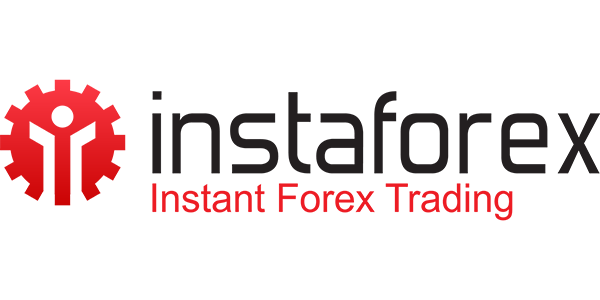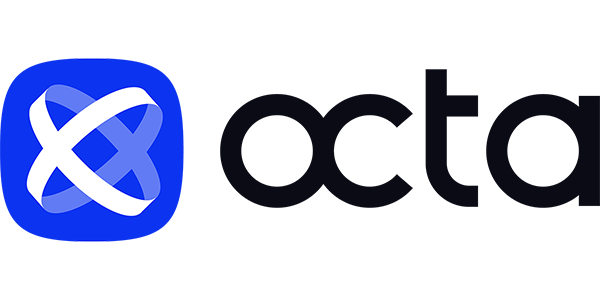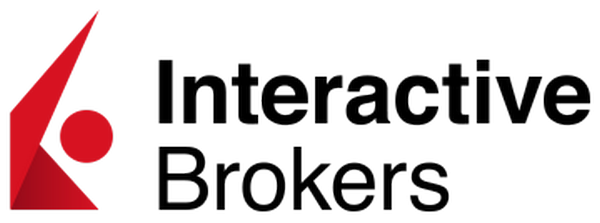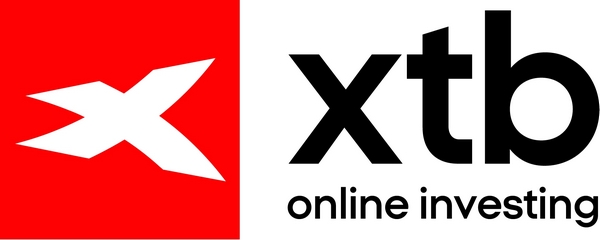List of The Best Platform for Trading
Here’s a quick comparison of the best trading platform based on their compatibility and market access.
| Best For | Commision | Min Dep | Leverage | Platforms | ||
|---|---|---|---|---|---|---|
| Beginners, Professionals, Active Traders | From $6 per lot | $100 | Up to 1:500 | MetaTrader 4 MetaTrader 5 Ctrader | ||
| Beginners, Active Traders | No commission (for Standard accounts) | $5 | Up to 1:1000 | MetaTrader 4 MetaTrader 5 | ||
| Beginners, Professionals, Active Traders | From $5 per lot | $100 | Up to 1:400 | AvaTradeGo MetaTrader 4 MetaTrader 5 | ||
| Beginners, Copy Traders | No commission | $200 | Up to 1:30 (1:5 for crypto) | eToro Platform MT4 MT5 | ||
| Beginners, Active Traders, Scalpers | No commission | $1 | Up to 1:2000 | MT4 MT5 WebTrader Exness Trade App | ||
| Beginners, Professionals, Active Traders | No commission (for Standard accounts) | $1 | Up to 1:3000 | MetaTrader 4 MetaTrader 5 | ||
| Beginners, Active Traders, Scalpers | From $5 per lot | $100 | Up to 1:50 | MetaTrader 4 FOREX.com Web Trader | ||
| Beginners, Active Traders, Scalpers | From $4 per lot | $100 | Up to 1:500 | MetaTrader 4 MetaTrader 5 cTrader FxProEdge | ||
| Beginners, Active Traders, Scalpers | No commission | $200 | Up to 1:1000 | MetaTrader 4 MetaTrader 5 WebTrader | ||
| Beginners, Professionals, Active Traders | From $6 per lot | $5 | Up to 1:1000 | MetaTrader 4 MetaTrader 5 Web Terminal Multi Terminal | ||
| Professionals, Active Traders, Scalpers | From $3 per lot | $200 | Up to 1:500 | MetaTrader 4 MetaTrader 5 cTrader | ||
| Beginners, Active Traders | No commission | $0 | Up to 1:200 | MetaTrader 4 ProRealTime WebTrader | ||
| Beginners, Active Traders, Proffesionals | No commission | $1 | Up to 1:1000 | MetaTrader 4 MetaTrader 5 | ||
| Beginners, Professionals | No commission on standard accounts | $10 | Up to 1:1000 | IQ Option Platform Mobile App | ||
| Active Traders, Beginners | No commission | $1 | Up to 1:50 | MetaTrader 4 OANDA Platform | ||
| Beginners, Active Traders, Scalpers | No commission on standard accounts | $25 | Up to 1:1000 | MetaTrader 4 MetaTrader 5 OctaTrader | ||
| Beginners, Active Traders, Scalpers | No commission | $200 | Up to 1:500 | MetaTrader 4 MetaTrader 5 cTrader | ||
| Active Traders, Scalpers | No commission | $10 | Up to 1:2000 | MT4 MT5 R StocksTrader | ||
| Inexperienced and Active Traders, Scalpers | From $2 per lot | $100 | Up to 1:500 | MetaTrader 4 MetaTrader 5 | ||
| Beginners, Proffesionals | No commission | $5 | Up to 1:1000 | MetaTrader 4 MetaTrader 5 |
Philippines Market Overview
Economic Performance & Outlook
- The Philippines economy grew by 5.6% in 2024, driven by steady household consumption and infrastructure investment.
- For 2025, forecasts place GDP growth in the 5.5%–6.0% range, although some revisions suggest more conservative expectations due to global headwinds.
- According to the Asian Development Bank, the Philippines remains one of the more resilient economies in Southeast Asia, though vulnerability to external shocks (e.g. commodity prices, trade disruptions) is nontrivial.
- The government recently revised medium-term growth targets amid global uncertainties, lowering its 2025 forecast to 5.5%–6.5% from earlier more aggressive estimates.
Inflation, Monetary & Fiscal Policy
- Inflation in the Philippines has been relatively contained, often hovering within or slightly below central bank targets.
- The Bangko Sentral ng Pilipinas (BSP) has adjusted interest rates in response to inflation trends and economic growth pressures—recent rate cuts have aimed to support growth amid subdued inflation.
- The fiscal deficit is expanding modestly; the government plans measures to manage public spending while supporting growth.
Financial Markets & Stock Exchange
- The Philippine Stock Exchange (PSE), formed from the merger of the Manila and Makati exchanges (1992), is the primary equities market in the country.
- The benchmark index PSEi recently stood at ~6,027 (as of September 26, 2025), down about 18.9% year-on-year, reflecting market volatility and external pressure.
- The index composition includes sectors such as financials, industrials, services, property, and mining/oil.
- Volume and trading value remain solid, though investor sentiment is sensitive to global risk, policy changes, and macro news.
- The PSE is pushing for broader inclusion, aiming to make capital markets more accessible to small investors and wage earners.
Key Economic Drivers & Sectors
- Domestic Consumption & Remittances
- Household consumption remains a pillar of growth; remittances from Overseas Filipino Workers (OFWs) inject stability into foreign exchange inflows and support consumer demand.
- Infrastructure & Construction
- Government infrastructure programs have been a focus, helping drive demand in construction, materials, and related sectors.
- Business Process Outsourcing (BPO) & IT / Services
- The Philippines continues to be a global hub for BPO, providing stable employment and export income in services.
- Manufacturing & Exports
- Manufacturing (electronics, machinery, etc.) remains important for export. Global demand, trade policies, and supply chain shifts affect this sector.
- Energy & Resource Transition
- The Philippines is revising its energy mix. Notably, coal’s share is expected to decline, with increased LNG use and renewable energy uptake.
- This shift may affect energy supply stability, pricing, and sectors dependent on electricity cost.
Strengths & Challenges
Strengths
- Large, youthful population and growing middle class increase domestic demand and investment potential.
- Resilient economy with diversified sectors — not overly reliant on one industry.
- Strong remittance inflows act as buffer and stabilize FX reserves.
- Increasing regulatory modernization and deeper capital markets ambitions (broader access, inclusion).
Challenges / Risks
- Exposure to global economic cycles, trade wars, and commodity price swings.
- Vulnerability to natural disasters, climate risk, and supply chain disruptions.
- Infrastructure gaps, bureaucratic delays, and regulatory bottlenecks.
- Currency depreciation pressure (PH peso) when capital flows reverse.
- Inflation management and wage pressures could strain consumer spending and monetary policy.
Market & Regulatory Context in the Philippines
Regulatory Framework & Investor Protection
- The Securities and Exchange Commission (SEC) of the Philippines regulates securities, derivatives, and brokerages. Broker entities must comply with SEC licensing, capital requirements, and investor protection rules.
- The Philippine Stock Exchange (PSE) acts as a self-regulatory exchange and implements listing and trading rules.
- In addition, the Internet Transactions Act of 2023 (RA 11967) governs digital commerce and ensures that online platforms engaging with Filipino users are subject to Philippine jurisdiction and consumer protection rules.
- Because of these laws, platforms serving Filipino users — even if they are foreign — may face legal liability under Philippine law if they “avail of the Philippine market.”
- Fraud and scam regulation is also robust: the Philippines has a reputation for applying legal doctrines (estafa, cybercrime statutes) aggressively against online trading scams.
Economic & Market Factors
- The Philippine Stock Exchange (PSE) is the local equities market. However, many Filipino traders look beyond to global instruments, forex pairs, commodities, indices, and crypto.
- Many trading platform comparison sites rank Interactive Brokers, IG, XTB, Swissquote, Trading 212, CapTrader, MEXEM, CMC Markets, Oanda, TradeStation Global as among the best platforms available to Filipinos.
- There is growing use of trading apps and mobile platforms among Filipino users, especially for stock and ETF trading.
- Local payment options, PHP funding, and withdrawal ease are key differentiators in the Philippine market. Many platforms advertise specific support for Filipino clients.
Criteria for Choosing a Trading Platform in the Philippines
When evaluating platforms for Filipino users, here are critical criteria to weigh:
| Criterion | Why It Matters in the Philippines | What to Verify / Test |
|---|---|---|
| Regulation & Legal Liability | Platforms serving Philippine clients may be subject to Philippine jurisdiction under RA 11967 | Check whether platform discloses legal responsibility toward Filipino users; whether they list Philippine legal terms |
| Acceptance of Filipino Users | Even big global platforms sometimes block customers in certain jurisdictions | Confirm that Philippines is accepted and that registration, KYC, and deposits are permitted |
| PHP Deposit / Withdrawal / Local Payment Support | Converting to/from USD / other foreign base currencies introduces extra cost and delay | Check whether the broker supports PHP bank transfers, local e-wallets, or bancnet / local bank deposit / withdrawal |
| Trading Costs, Spreads & Fees | Hidden markups, poor execution, and withdrawal fees can erode gains | Compare executed spread (not just advertised), commissions, overnight swap, withdrawal fees |
| Platform Technology & Tools | Execution stability, mobile access, charts, automation, APIs matter greatly | Use demo or small trades during news events to test slippage, order reliability, mobile responsiveness |
| Instrument Variety | A robust instrument set provides flexibility and diversification | Check if the platform offers forex, indices, commodities, global equities / CFDs, crypto (where allowed) |
| Customer Support & Localization | Issues and banking queries are resolved faster if support is local or responsive | Prefer support during Philippines business hours, possibly in Filipino / English |
| Withdrawal Reliability & Business Practices | Even small hiccups can hurt trust | Test small withdrawal first; read user feedback about delays or rejections |
| Reputation & History | Longevity, user reviews, regulatory actions reveal reliability | Research Filipino user feedback, community forums, third-party reviews |
| Safety & Risk Controls | To protect from extreme losses | Look for negative balance protection, stop loss features, 2FA, encryption, segregated client funds |
Top Trading / Brokerage Platforms Available to Filipino Users (2025)
Based on recent rankings, broker comparison sites, and Philippine market reviews, here are several platforms commonly recommended in 2025 for Filipino traders:
Interactive Brokers
Interactive Brokers
Strengths
- Broad instrument access: stocks, forex, options, futures, bonds across many markets.
- Excellent platform tools, APIs, mobile and web trading.
- Competitive pricing for active traders, good reputation in the Philippines.
- Listed as top platform for the Philippines by BrokerChooser.
Weaknesses / Things to Verify
- PHP deposit/withdrawal support may be limited; conversion to base currency likely.
- Account minimums or regional entity specifics may differ for Filipino users.
Best For
- Intermediate to advanced traders seeking multi-market access and professional tools.
IG
IG
Strengths
- Strong brand, global reach, solid platform and research.
- Ranked among top platforms for Filipinos.
Weaknesses
- Fees / spreads may be higher for smaller accounts.
- Local support and payment methods need careful verification.
Best For
- Traders who prioritize trust, brand strength, and broad market access, over minimal cost.
XTB
XTB
Strengths
- Good mobile and web apps, lower costs, CFD access.
- Included in “best broker in Philippines” lists.
Weaknesses
- Some limitations on direct stock ownership in certain markets for Philippine users.
- PHP funding needs confirmation.
Best For
- Filipino traders who want a simpler, leaner platform for CFD and forex without extreme complexity.
Others: Swissquote, Trading 212, CapTrader, MEXEM, CMC, Oanda, TradeStation Global
Each has merits:
- Swissquote: premium brand, strong in global markets.
- Trading 212: often favored for ease-of-use and lower cost in stock/ETF trading.
- CapTrader, MEXEM: often appealing for global execution and multi-asset reach.
- CMC Markets: strong research and platform depth.
- Oanda: known for forex and currency tools.
- TradeStation Global: robust tools for serious traders.
Comparison Table: Top Platforms for Filipino Users, 2025
Below is a conceptual table you can adapt with actual numbers:
| Platform / Broker | Accepts Philippine Users | PHP / Local Funding Support | Typical Spread / Cost | Instruments Offered | Strengths | Limitations |
|---|---|---|---|---|---|---|
| Interactive Brokers | Yes | Partial / conversion | Low (for active users) | Stocks, forex, options, futures | Broad access, reputation | PHP support may be limited |
| IG | Yes | Check local deposit methods | Moderate | CFDs, forex, indices | Brand, research tools | Entry costs may be high |
| XTB | Yes | PHP deposit via third-party | Competitive | Forex, CFDs, stocks | Strong apps, ease of use | Some markets may be restricted |
| Swissquote | Yes | Mostly global banking | Moderate to high | Multi-asset | Premium brand | Cost may be higher |
| Trading 212 | Yes | Local options possible | Low for stocks | Stocks, ETFs, CFDs | User-friendly | Feature limitations for advanced strategy |
| CapTrader / MEXEM / CMC / Oanda | Varies | Usually conversion | Varies | Multi-asset | Niche advantages | Local support / deposit may vary |
Strengths & Weaknesses of Trading Platforms in the Philippines
Strengths
- Access to global markets: Many platforms allow Filipinos to trade not just local PSE stocks but forex pairs, indices, commodities, international equities, and crypto (where allowed).
- Mobile penetration: Because many Filipinos use smartphones, strong mobile apps matter. Platforms like Interactive Brokers, XTB, and others have highly rated apps.
- Platform variety & tools: Many provide charting, indicators, algorithmic trading, copy trading, multiple device compatibility.
- Increasing competition: More brokers are tailoring Philippines-specific services, providing better spreads, PHP support, localized support.
- Legal recourse: The 2023 Internet Transactions Act strengthens the ability of Filipino users to hold platforms liable under Philippine law.
Weaknesses / Challenges
- PHP / local fund integration: A major barrier is efficient funding and withdrawal in local currency.
- Hidden currency conversion costs: Even when depositing PHP, conversion to a foreign base currency can eat into profits.
- Delays or rejections of withdrawal: Especially for smaller local users, some platforms may delay or require extra verification.
- Platform restrictions: Some brokers restrict certain markets or features to Filipino clients due to licensing or regulatory reasons.
- Complexity for beginners: Powerful tools and many options can overwhelm new traders.
- Scam risk: Some platforms market to Filipinos without proper licensing or consumer protection. The Philippines has legal mechanisms to penalize scams, but prevention is better.
Criteria for Choosing a Trading Platform in the Philippines
When selecting a trading platform, Filipino traders should pay close attention to the following factors. These criteria will help ensure both safety and usability in the local context:
Regulation & Legal Compliance
- Prefer platforms regulated by trusted global authorities like FCA (UK), ASIC (Australia), CySEC (Cyprus), or MAS (Singapore).
- Check if the broker is recognized or allowed by the Philippine SEC under the Securities Regulation Code (RA 8799).
- Platforms operating under the Internet Transactions Act (RA 11967) are subject to Philippine consumer protection, which adds a safety net.
Acceptance of Philippine Clients
- Confirm the platform explicitly supports Filipino users.
- Ensure KYC requirements are clear and manageable with Philippine IDs and documents.
Funding in PHP & Withdrawal Options
- Look for brokers that allow PHP deposits and withdrawals through local banks, GCash, Maya, or other trusted e-wallets.
- If the account is USD/EUR based, check conversion fees and exchange margins.
- Always test small deposits and withdrawals first to gauge speed and reliability.
Trading Costs & Fees
- Evaluate spreads, commissions, overnight swaps, and hidden charges.
- Compare platforms’ total cost per trade on the assets you trade most (e.g. USD/PHP forex pair, global stocks, commodities).
- Beware of inactivity or withdrawal fees that eat into profits.
Platform Technology & User Experience
- Choose platforms offering stable execution, low slippage, and reliable uptime.
- Mobile trading is key in the Philippines — apps should be smooth, responsive, and feature-rich.
- Look for advanced tools: charting, indicators, copy trading, API access, automated strategies.
Instrument Variety
- Top platforms should provide a wide range of assets: forex pairs, commodities, indices, local & global stocks, ETFs, and crypto (if allowed).
- More instruments mean greater diversification and trading opportunities.
Customer Support & Localization
- Support should be available in English or Filipino during Philippine business hours.
- Quick resolution of deposit, withdrawal, or account issues is crucial.
Reputation & Track Record
- Prioritize platforms with long operating history and positive reviews from Filipino traders.
- Search local forums, communities, or social groups for real user experiences.
Risk Management & Safety Features
- Ensure brokers offer negative balance protection, stop-loss tools, and segregated client accounts.
- Look for secure login options like two-factor authentication (2FA).
Popular Instruments for Filipino Traders
Filipino traders access both local markets through the Philippine Stock Exchange (PSE) and global markets via international brokers. The most popular instruments reflect liquidity, accessibility, and the ability to diversify.
| Instrument Type | Examples | Why Filipinos Trade Them |
|---|---|---|
| Forex | USD/PHP, EUR/USD, GBP/USD | High liquidity, currency hedging, global exposure |
| Local Equities (PSE) | Jollibee, Ayala Corp, BDO, SM Investments | Exposure to Philippine growth sectors |
| Global Equities/ETFs | Apple, Tesla, S&P 500 ETFs | Access to global tech & blue-chip companies |
| Indices | NASDAQ 100, S&P 500, Nikkei 225 | Market-wide exposure, hedging |
| Commodities | Gold, Oil, Silver | Safe-haven, inflation hedge, diversification |
| Crypto | Bitcoin, Ethereum, Ripple | High volatility, speculative opportunities |
| Bonds/Fixed Income | PH RTBs, Global Bonds | Lower risk, income stability |
Forex Pairs
- Major pairs like EUR/USD, USD/JPY, and GBP/USD are widely traded due to their liquidity and tight spreads.
- USD/PHP is important for Filipinos because it reflects exchange rate movements tied to remittances, imports, and exports.
- Some traders explore crosses (e.g., EUR/GBP, AUD/JPY) for diversification.
Philippine Equities (PSE)
- Local investors often trade blue-chip stocks listed on the PSEi index (e.g., SM Investments, Ayala Corp, Jollibee Foods, BDO Unibank).
- Domestic stocks give exposure to growth in Philippine consumer demand, banking, real estate, and infrastructure sectors.
- The Exchange Traded Funds (ETFs) available on the PSE provide broader market exposure.
Global Equities via CFDs or Brokers
- Through international platforms, Filipinos trade shares of global giants like Apple, Tesla, Amazon, or Google.
- CFDs (Contracts for Difference) allow exposure to price movements without direct ownership, often with leverage.
- ETFs tracking U.S. or global indices (e.g., S&P 500, NASDAQ) are also popular.
Indices
- Popular index instruments include S&P 500, NASDAQ 100, FTSE 100, DAX 30, and Nikkei 225.
- These allow traders to speculate on the overall direction of major economies, rather than focusing on individual stocks.
Commodities & Precious Metals
- Gold (XAU/USD) is a favored safe-haven asset among Filipino traders, often used during times of currency or economic uncertainty.
- Silver, crude oil (WTI/Brent), and natural gas are also commonly traded.
- Commodities give diversification and are attractive during inflationary cycles.
Cryptocurrencies
- Many younger Filipino traders are active in Bitcoin, Ethereum, Ripple, and altcoins, either directly or via CFDs.
- With strong adoption of digital wallets like GCash and Maya, crypto has become a growing part of retail portfolios.
Bonds & Fixed-Income Instruments
- While less common among retail traders, government bonds (RTBs) and fixed-income products are available via banks and brokers for Filipinos seeking stability.
Conclusion
The Philippines is becoming an increasingly dynamic market for retail traders, with growing access to both local equities through the PSE and global markets via international brokers. Choosing the best trading platform is not just about low fees — it requires balancing regulatory safety, PHP deposit and withdrawal options, platform technology, and access to diverse instruments. Ultimately, the best trading platform in the Philippines depends on your priorities — whether it’s cost efficiency, access to global markets, mobile usability, or strong local support. Filipino traders are advised to start with small deposits, test withdrawal reliability, and compare platforms against their own strategies and risk appetite.
Tips for Filipino Traders
- Always verify that the broker accepts Philippine residents and check legal exposure under RA 11967.
- Start with small deposits and withdrawals to test the process.
- Be cautious with leverage; volatility in forex or markets can wipe out capital quickly.
- Use demo accounts to test execution and slippage during high volatility.
- Diversify instruments — don’t rely purely on one market.
- Stick to brokers with solid user reviews from Filipino traders.
- Keep updated on Philippine SEC, PSE, and e-commerce / online-commerce laws as they evolve.
FAQs
Is online trading legal in the Philippines?
Yes. Online trading is legal in the Philippines and is regulated primarily by the Securities and Exchange Commission (SEC) under the Securities Regulation Code (RA 8799). Brokers must comply with licensing and disclosure requirements.






